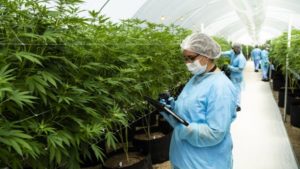 Microbial contaminants are called “micros” for a reason – they’re small. Really small. And hence hard to detect. They also have certain behaviors and growth tendencies in plants and crops like Cannabis which is why one of the principal analytic safety tests for Cannabis products is the evaluation of microbial contamination. Mold, mildew, fungus, and bacteria can all create toxin-laden products unsafe for human consumption. Very unsafe.
Microbial contaminants are called “micros” for a reason – they’re small. Really small. And hence hard to detect. They also have certain behaviors and growth tendencies in plants and crops like Cannabis which is why one of the principal analytic safety tests for Cannabis products is the evaluation of microbial contamination. Mold, mildew, fungus, and bacteria can all create toxin-laden products unsafe for human consumption. Very unsafe.
Often cultivators find that, frustratingly, samples from the same harvest batch may have different results for pathogen growth. Some samples are free of microbial contamination and pass the test, while others from the same harvest batch test positive for microbial growth and fail the test. This occurrence is not uncommon, especially with smaller cultivation operations, and the reason is the subtle but significant variables within the growing environment.
Spores of mold and mildew tend to travel short distances, and so when all the plants in a harvest are evaluated independently, it is found that mold and mildew contamination occurs in small pockets, that can be isolated and removed with minimal contamination to the remaining harvest. Microbials can contaminate one part of a plant, and not another. Likewise, microbials can contaminate one portion of a crop, and not the other.
Some of the contributing variables found in the growing environment include including proper laminar airflow vectors and resulting humidity vortices; HVAC systems, filters and maintenance; water sources, purification, filters and maintenance; human interaction, contamination, use of protective gear like Tyvek suits, booties, even changing your sneakers, etc. The list goes on. With proper environmental engineering and standard operating procedures, the risk of contaminating the entire harvest is minimized, but when it’s not we find that some plants will be contaminated, while most are not.
When a laboratory like PureVita Labs samples a harvest, our random sampling algorithm is designed to ensure an accurate representation of the entire harvest. This means that even though only 5% of a harvest may be contaminated, there is a 95% chance that the microbial testing will identify the contamination. This is why any given harvest, when sampled properly, may have one sub-sample test positive, while the others test negative.
It is important to remember that even a small quantity of toxin in a small percentage of shelved products can produce tragic healthcare outcomes for patients and consumers.
